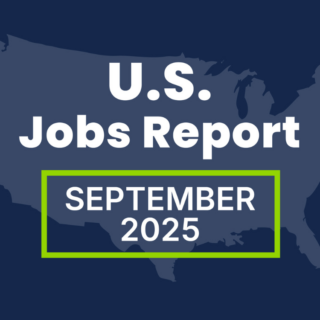Understanding how to improve employer brand has become a critical business imperative. Skills shortages persist across industries, and employers face unprecedented competition for the best workers. To succeed in attracting top candidates and retaining talent, organizations must move beyond traditional recruitment strategies and focus on building a compelling employer brand that resonates with their target workforce.
Your employer brand represents the public perception of what it’s like to work for your organization—it’s what job seekers, employees, and the broader market think about when your company’s name is mentioned. A strong employer brand enables organizations to attract the right talent, improve retention rates, and significantly reduce recruitment costs. However, knowing how to improve an employer brand requires a strategic, multi-faceted approach that addresses every touchpoint in the candidate experience.
How to Improve Employer Brand: 5 Essential Strategies That Work
1. Conduct Regular Employer Brand Audits
Conducting a comprehensive employer brand audit is fundamental to understanding your current market position and identifying gaps between your intended brand message and actual candidate perceptions. This strategic assessment reveals how your organization is genuinely perceived by both current employees and potential candidates, uncovering discrepancies between internal culture and external reputation that could be hindering recruitment efforts.
Conduct a competitive analysis to benchmark your employer brand against industry leaders and direct competitors, while also performing a comprehensive digital footprint assessment across all online platforms where your brand appears. While you might know intuitively that your brand needs improvement, but without comparative data, it’s difficult to:
- Identify specific areas requiring attention
- Prioritize investments for maximum impact
- Demonstrate ROI to key stakeholders
- Track progress over time
- Understand how you stack up against competitors
This is why PeopleScout developed the Outthink Index—a proprietary benchmarking tool designed to provide comprehensive analysis across nine critical components of employer branding. Built by our in-house talent advisory experts and leveraging data from hundreds of employer brands, the Outthink Index provides organizations with precise visibility into how their brand measures up against competitors, highlights specific enhancement opportunities, and ultimately strengthens their capacity to attract and retain exceptional talent.
👉 Contact us to receive your custom Outthink Index report.
2. Put Authenticity at the Center of Your Content Strategy
A comprehensive employer brand content strategy requires positioning your organization as both an industry leader and an attractive career destination. This involves creating valuable content that establishes your company as an authority through insights on emerging trends, discussions about future skills requirements, and examples of how you’re solving critical industry challenges. Equally important is developing content focused on career advice, professional development, and employee growth opportunities, which demonstrates your commitment to team members’ success while effectively attracting passive candidates.
The most powerful employer brand advocacy comes directly from your employees themselves. In today’s climate of corporate skepticism, employee voices carry exceptional credibility—according to the Edelman Trust Barometer, 58% of people trust what employees say about their workplace, making them more valuable than traditional advertising. Employee-generated content through blog posts, social media, and video testimonials provides authentic insights that resonate far more effectively than corporate messaging, highlighting the immense value of building robust employee advocacy programs.
- Formalize an Employee Advocacy Program: Identify employee ambassadors and provide them with training, content ideas and official recognition for their efforts.
- “Day in the Life” Features: Showcase real employees performing their roles in different departments and highlight various career paths within the organization. This provides an honest look at your company culture.
- Social Media Takeovers: Allow team members to take over your company’s Instagram Stories or LinkedIn page for a day. This offers a personal and relatable perspective on your workplace.
- Highlight Success Stories: Share authentic narratives of career progression, learning opportunities and meaningful projects. This demonstrates growth and impact within your organization.
- LinkedIn Engagement: Support employees in building their professional brands on LinkedIn, which naturally promotes your organization as an employer of choice.
- Interactive Content: Consider investing in virtual reality experiences for remote office tours or job previews to create an immersive candidate experience that will set you apart.
3. Invest in Digital Presence Optimization
Effective employer branding requires active oversight of your digital reputation across all online touchpoints, not just your company website. This means consistently monitoring and managing your presence on review sites, social media platforms and other digital channels where potential candidates might encounter your brand. A proactive approach to online reputation management ensures your employer brand maintains a positive and authentic presence wherever job seekers might research your company.
Today’s job seekers, particularly Gen Z and millennials, demand seamless digital experiences throughout their entire candidate journey. Your employer brand strategy must prioritize mobile-optimized, digital-first approaches that meet candidates where they spend their time—on social platforms and mobile devices. Creating intuitive, accessible digital touchpoints ensures you can effectively engage with the modern workforce and provide the smooth, tech-forward experience that today’s candidates expect from potential employers.
- Proactive Review Strategy: Encourage satisfied employees and successful interns to share honest reviews on Glassdoor and other review sites. Share positive reviews on your career page and social media to amplify good experiences.
- Social Media Monitoring: Track social media mentions using tools like Hootsuite, Sprout Social or Google Alerts.
- Develop a Response Protocol: Create a process for responding to negative reviews or social media incidents quickly and professionally across all platforms. Consider engaging a reputation management service for severe issues.
- Connect Digital Platforms to Your ATS: Implement one-click apply options where possible to boost your conversion.
- Create a Frictionless Experience: Use responsive and accessible design for all recruitment-related content and ensure your career pages load quickly on mobile devices. Test your application process regularly on different devices and browsers.
- Embrace New Tools: Consider AI-powered chatbots for initial candidate screening and FAQ responses.
4. Implement Employer Brand Measurement Frameworks
Without measurable data, it’s impossible to know whether your employer brand initiatives are resonating with target audiences or driving meaningful business outcomes. Key metrics to monitor include:
- Application-to-hire ratios by source
- Employee Net Promoter Score (eNPS)
- Glassdoor ratings and review sentiment
- Social media engagement rates on employer brand content
- Time-to-hire for key positions
- Employee retention rates by hiring source
Implementing a comprehensive employer brand measurement system requires establishing baseline metrics, setting regular monitoring schedules and utilizing both quantitative and qualitative data collection methods. This systematic approach enables data-driven decision making and helps justify continued investment in employer brand initiatives while demonstrating clear ROI to leadership.
- Leverage Surveys: Start by conducting employee surveys, exit interviews, and candidate experience surveys to gather direct feedback and understand program effectiveness.
- Conduct Social Listening: There are several tools on the market that let you track mentions, engagement and brand sentiment across social media platforms and review platforms.
- Build Analytics Dashboards: Talent technology solutions, like Affinix®, let you create recruitment analytics dashboards that highlight trends and correlate employer brand activities with business outcomes.
- Track Industry Trends: Use tools like the Outthink Index to compare your metrics against industry benchmarks and your own historical performance.
5. Partner with an RPO Provider to Improve Employer Branding
For talent leaders navigating the complex landscape of employer branding, recruitment process outsourcing (RPO) partners offer a critical external perspective and specialized expertise that can be transformative when it comes to improving your employer brand.
👉 What is Recruitment Process Outsourcing?
Organizations often struggle with employer branding because they are too close to their own narrative. Internal teams face significant challenges like:
- Institutional blindness to cultural nuances
- Limited perspective on candidate perceptions
- Difficulty in objective self-assessment
- Lack of specialized employer branding expertise
RPO partners like PeopleScout provide the essential outside lens—a strategic advantage that can reveal hidden opportunities and overcome internal limitations.
A strategic RPO partner brings:
- External objectivity
- Specialized employer branding expertise
- Advanced research capabilities
- Multi-channel communication strategies
- Measurable employer brand development
- Competitive intelligence
- Technological innovation
👉 Learn more about our Talent Advisory solutions.
Mastering How to Improve Employer Brand: Your Path Forward
Employer branding has evolved from a nice-to-have to a business imperative. Organizations that invest in authentic employee advocacy, maintain strong online reputations and create compelling digital experiences will have significant advantages in attracting and retaining top talent.
Understanding how to improve your employer brand requires authenticity combined with strategic execution. Focus on empowering your existing employees to become genuine advocates, maintain active engagement across digital platforms, and continuously adapt your approach based on data and feedback. The most successful organizations recognize that learning how to improve employer branding is an ongoing process that demands consistent attention and refinement.




